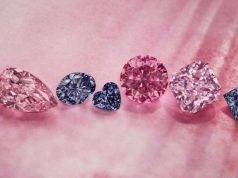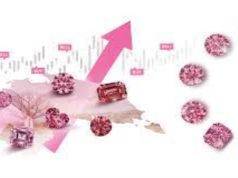Buying a diamond doesn’t have to be expensive. You can find a lab-grown diamond that looks as real as a natural diamond, but won’t cost as much. The difference is in the way they are grown. While natural diamonds are formed with natural processes, lab-grown diamonds are created using electricity.
Laboratory-grown diamonds are just as real as natural diamonds
Laboratory-grown diamonds are manufactured in a laboratory, and they share the same chemical and physical properties as natural diamonds. They sparkle just as brightly, and are equally durable. Despite their similarities to natural diamonds, laboratory-grown diamonds are slightly different in appearance. They may have metallic inclusions or weak strain patterns, but these differences are small and can be undetected when a diamond is cut and polished.
A major difference between Lab diamonds Brisbane and natural diamonds lies in their origin. While natural diamonds formed about a billion years ago, lab-grown diamonds were made in a matter of weeks in a lab. In fact, the chemical composition of laboratory-grown diamonds is almost identical to that of natural diamonds. In addition, they cost around 60% less than natural diamonds. Therefore, if you’re looking for a pretty symbol of love, a lab-grown diamond is an excellent choice. But before you purchase a lab-grown diamond, be sure to ask the store’s staff to tell you what the difference is between them.
Although lab grown diamonds UK are a cheaper alternative to natural diamonds, they do have their advantages and disadvantages. Natural diamonds are considered rarer and more expensive, and they tend to hold their value better. The finite supply of natural diamonds ensures that they remain valuable. However, a limited supply of lab-grown diamonds could mean that they don’t hold their value over time. Due to this, resale prices can depreciate.
They are made with electricity
Lab grown diamonds Brisbane are produced by a process known as High Pressure High Temperature (HPHT). The process aims to simulate the formation of natural diamonds on earth. During this process, natural graphite is placed in a large machine, and under extreme pressure and temperatures, it transforms into a diamond. The diamond produced by the process is chemically identical to the natural diamond. These diamonds are graded according to the same 4 Cs as natural diamonds.
The manufacturing process of these diamonds has many advantages, including a low carbon footprint. They are also energy-efficient and consume less water than mined diamonds. On average, a lab-grown diamond uses about 70 litres of water, compared to 480 litres of water for a mined diamond.
As technology improves, the price of lab-grown diamonds continues to fall. The technology is clean, eco-friendly, and conflict-free. It also creates diamonds that have unique characteristics, such as fluorescence. Despite being a good alternative to mining diamonds, they should be purchased with care. They fluctuate in price, so make sure you do your research before buying one.
A company called Blue Nile, based in Belgium, has been in the lab-grown diamond industry for more than 20 years. It joined forces with Lightbox in 2020 and has been perfecting its business model to offer high-quality stones at affordable prices. In addition to this, it also offers traceability for each individual diamond.
They are less expensive than natural diamonds
If you’re looking for a ring that’s more affordable than a natural diamond, lab grown diamonds are a great choice. Generally speaking, lab grown diamonds cost about 30 percent less than natural diamonds, and they’re of the same quality. The difference between the two is the costs associated with mining, polishing, and inspection.
Although they are more affordable, it’s important to know the differences between lab grown diamonds and natural diamonds. Natural diamonds contain traces of nitrogen, whereas lab grown diamonds don’t. These differences are insignificant to the naked eye, but gemologists use them to determine the difference between a natural diamond and a lab grown one.
Prices for lab grown diamonds have fallen significantly since the early days of technology. In the beginning, a 1 carat lab grown diamond was only slightly less expensive than a natural diamond, and it was difficult to find them. Now, a comparable quality lab grown diamond can be purchased for only $2,300.
Conclusion
Natural diamonds are harder than lab-grown diamonds, but lab-grown diamonds have the same chemical and physical properties as natural diamonds. Moreover, lab grown diamonds are conflict-free and ethically sourced. These diamonds are just as durable as natural diamonds, and they are rated at a Mohs scale of 10. Nevertheless, a lab grown diamond can still chip when hard-hitted.











